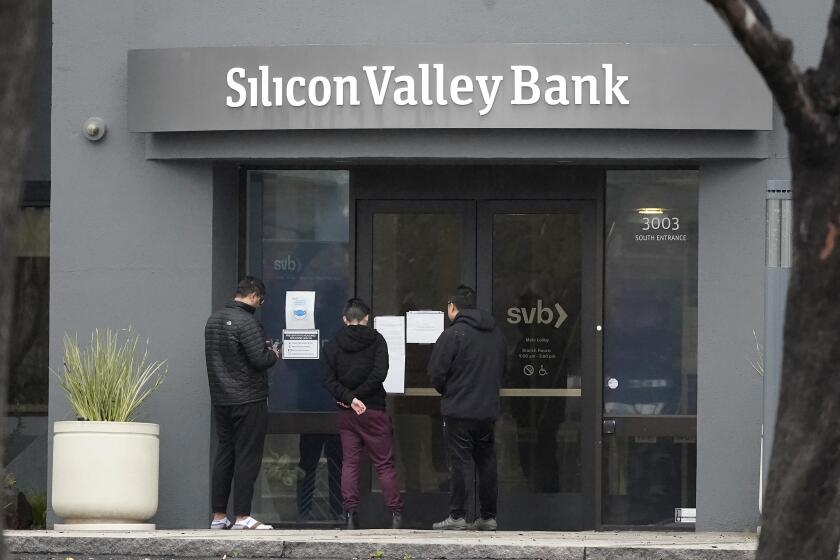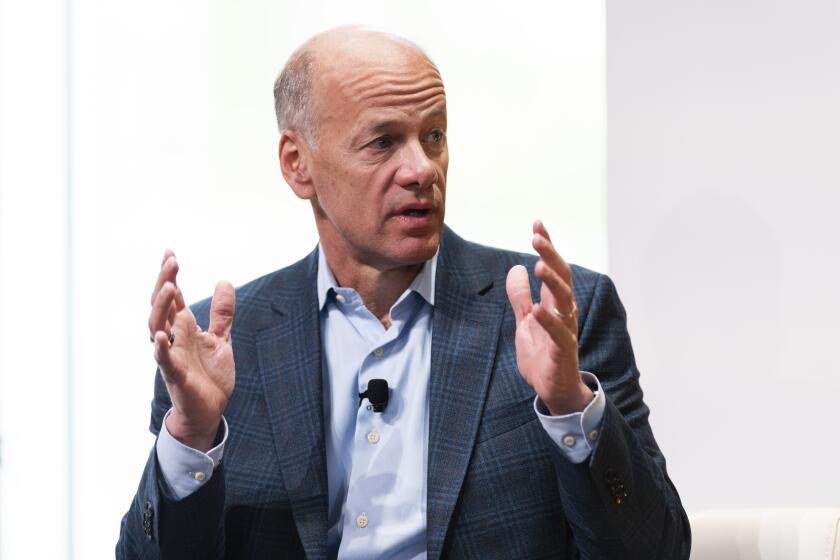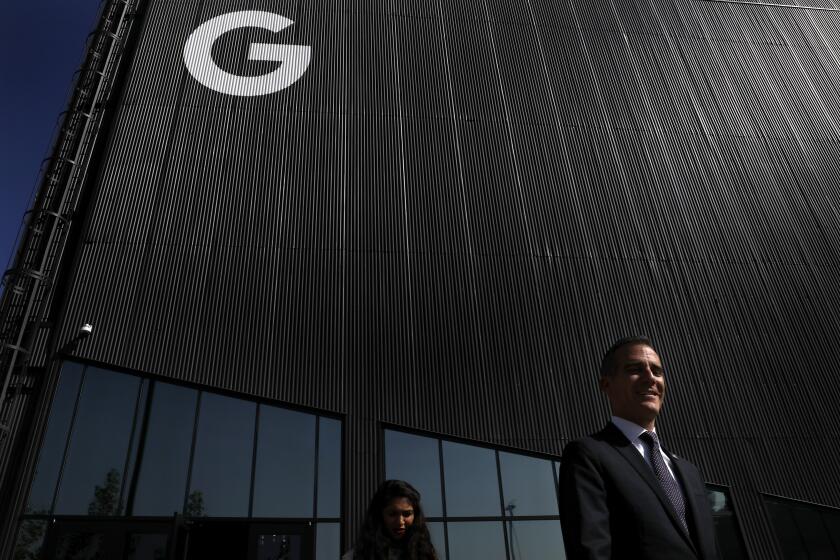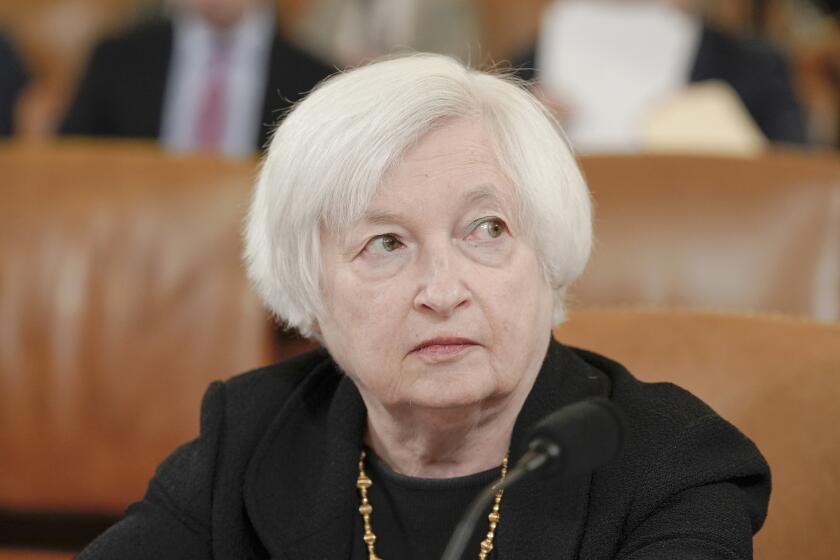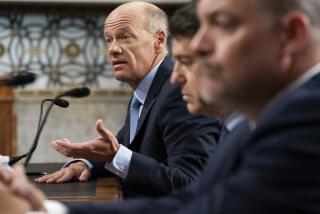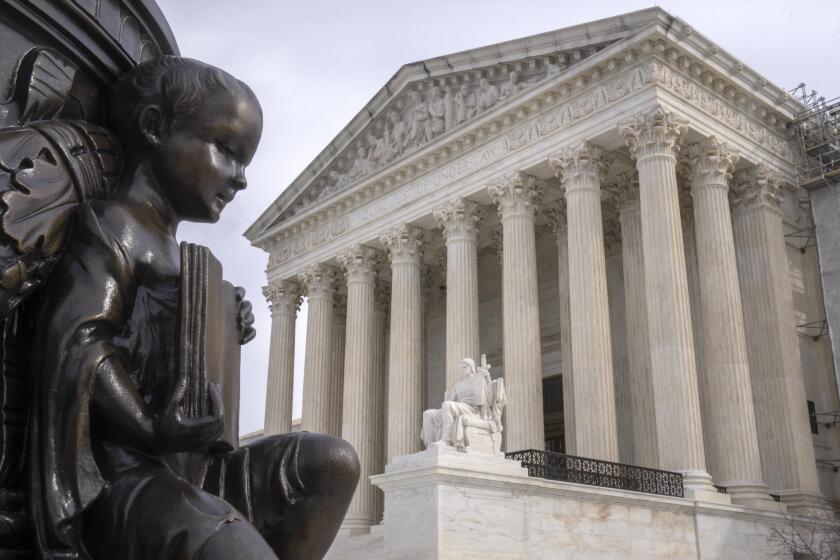U.S., Britain try to stem the fallout from Silicon Valley Bank’s collapse
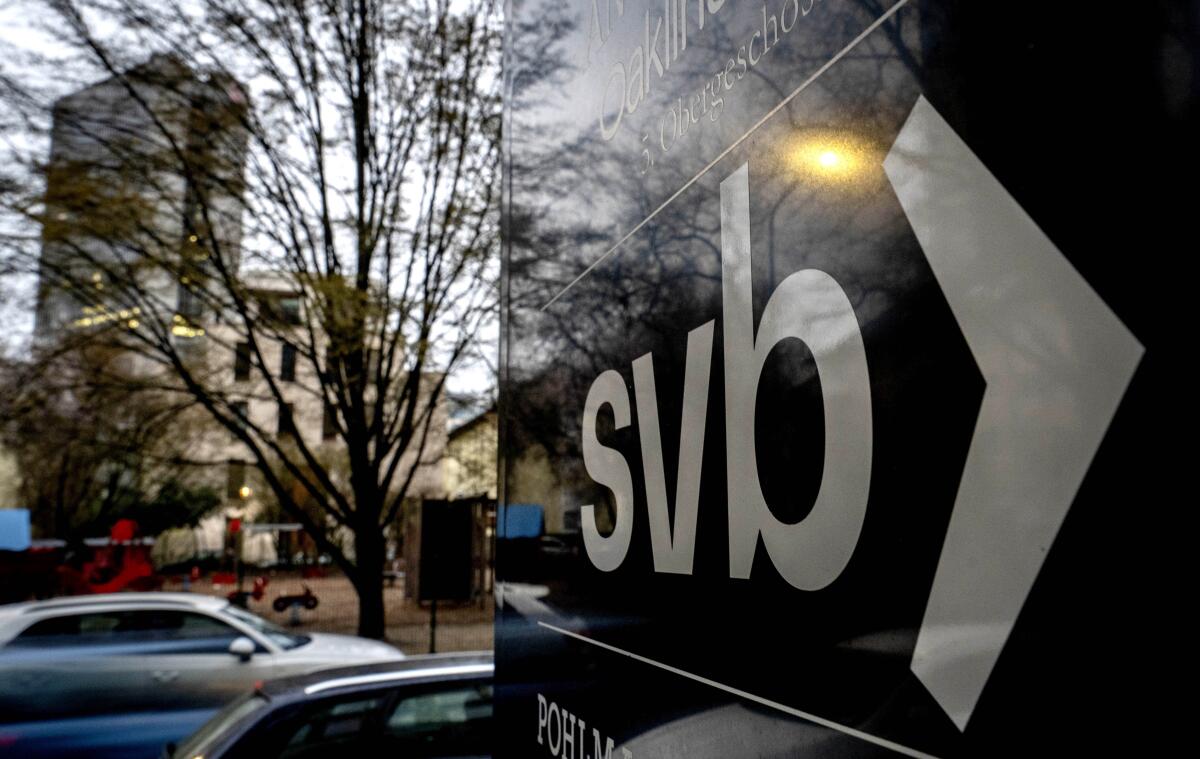
- Share via
NEW YORK — Governments in the U.S. and Britain took extraordinary steps to stop a potential banking crisis after the historic failure of Silicon Valley Bank prompted fears of a broader upheaval.
U.S. regulators worked through the weekend to find a buyer for the bank, which had more than $200 billion in assets and catered to tech startups, venture capital firms and well-paid technology workers.
While those efforts appeared to have failed, officials assured all of the bank’s customers that they would be able to access their money Monday.
The assurances came as part of an expansive emergency-lending program intended to prevent a wave of bank runs that would threaten the stability of the banking system and the economy as a whole.
Silicon Valley Bank failed late last week, prompting fears of wider upheaval. Here’s what you should know about the collapse and what comes next.
Meanwhile, Britain’s Treasury and the Bank of England announced early Monday that they had facilitated the sale of Silicon Valley Bank U.K. to HSBC, Europe’s biggest bank, ensuring the security of 6.7 billion pounds ($8.1 billion) in deposits.
Regulators in the U.S. rushed to close Silicon Valley Bank on Friday when it experienced a traditional bank run, where depositors rushed to withdraw their funds all at once. It is the second-largest bank failure in U.S. history, behind only the 2008 failure of Washington Mutual.
SVB Financial Group Chief Executive Greg Becker advised clients of SVB-owned Silicon Valley Bank to “stay calm” amid concern about the bank’s financial position.
In a sign of how fast the financial bleeding was occurring, regulators announced that New York-based Signature Bank had also failed and was being seized Sunday.
With more than $110 billion in assets, Signature Bank is the third-largest bank failure in U.S. history. Another beleaguered bank, First Republic Bank, announced Sunday that it had bolstered its financial health by gaining access to funding from the Fed and JPMorgan Chase.
In an effort to shore up confidence in the banking system, the U.S. Treasury Department, Federal Reserve and the Federal Deposit Insurance Corp. said Sunday that all Silicon Valley Bank clients would be protected and able to access their money.
“This step will ensure that the U.S. banking system continues to perform its vital roles of protecting deposits and providing access to credit to households and businesses in a manner that promotes strong and sustainable economic growth,” the agencies said in a joint statement.
Demands by the tech industry’s most vocal libertarians for a government bailout of Silicon Valley call to mind the old saw: The goal in business to privatize profits and socialize losses.
Under the plan, depositors at Silicon Valley Bank and Signature Bank, including those whose holdings exceed the $250,000 insurance limit, will be able to access their money Monday.
Britain also moved quickly, working throughout the weekend to arrange the sale of Silicon Valley Bank U.K., the California bank’s British arm, for the nominal sum of one pound ($1.21).
While the bank is small, with less than 0.2% of U.K. bank deposits according to central bank statistics, it had a large role in financing technology and biotech startups that the British government is counting on to fuel economic growth.
Chancellor of the Exchequer Jeremy Hunt, the British government’s Treasury chief, said that some of the country’s leading tech companies could have been “wiped out.”
Increasingly offering products untethered to the average consumer’s needs, the tech industry has been dwelling in La La Land. Its real-world expansion into L.A. is no coincidence.
“When you have very young companies, very promising companies, they’re also fragile,” Hunt told reporters, explaining why authorities moved so quickly. “They need to pay their staff, and they were worried that as of 8 a.m. this morning, they might literally not be able to access their bank account.”
He stressed that there was never a “systemic risk” to Britain’s banking system.
In the U.S., officials characterized their lending program as akin to what central banks have done for decades: Lend freely to the banking system so that customers would be confident that they could access their accounts whenever needed.
That will allow banks that need to raise cash to pay depositors to borrow that money from the Fed, rather than having to sell Treasuries and other securities to raise the funds.
Breaking News
Get breaking news, investigations, analysis and more signature journalism from the Los Angeles Times in your inbox.
You may occasionally receive promotional content from the Los Angeles Times.
Silicon Valley Bank began its slide into insolvency when it was forced to dump some of its Treasuries at at a loss to fund its customers’ withdrawals. Under the Fed’s new program, banks can post those securities as collateral and borrow from the emergency facility.
The Treasury has set aside $25 billion to offset any losses incurred under the Fed’s emergency-lending facility. Fed officials said, however, that they do not expect to have to use any of that money, given that the securities posted as collateral have a very low risk of default.
Though Sunday’s steps marked the most extensive government intervention in the banking system since the 2008 financial crisis, its actions are relatively limited compared with what was done 15 years ago. The two failed banks themselves have not been rescued, and taxpayer money has not been provided to them.
President Biden said Sunday evening as he boarded Air Force One back to Washington that he would speak about the situation Monday.
Treasury Secretary Janet Yellen says the federal government won’t bail out Silicon Valley Bank, but is working to help depositors.
In a statement, Biden also said he was “firmly committed to holding those responsible for this mess fully accountable and to continuing our efforts to strengthen oversight and regulation of larger banks so that we are not in this position again.”
Some prominent Silicon Valley executives feared that if Washington didn’t rescue the failed bank, customers would make runs on other financial institutions in the coming days. Stock prices plunged over the last few days at other banks that cater to technology companies, including First Republic Bank and PacWest Bank.
Among the bank’s customers are a range of companies from California’s wine industry, where many wineries relied on Silicon Valley Bank for loans, and technology startups devoted to combating climate change.
